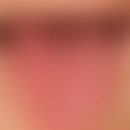Synonym(s)
Purpura in C-avitaminosis; scurvy; vitamin C deficiency
HistoryThis section has been translated automatically.
Echthius, 1541; Woodall, 1637; Lind, 1753
DefinitionThis section has been translated automatically.
Vitamin C deficiency syndrome with arthralgias, cornification disorders and bleeding tendency in adults Vitamin C deficiency symptoms are to be expected at a level of < 1.0 mg/l. In children, vitamin C deficiency manifests itself as Moeller-Barlow-Cheadlesche-disease with gingival changes, slightly bleeding gums and dentition disorders.
You might also be interested in
ManifestationThis section has been translated automatically.
Scurvy is a rather forgotten disease in the industrial nations. At risk are patients with advanced renal failure, chronic inflammatory bowel disease, tumor patients undergoing chemotherapy, and psychiatric patients (dementia, anorexia, alcohol dependence).
LocalizationThis section has been translated automatically.
Especially the outer side of the upper arms, buttocks and shins are preferentially affected.
ClinicThis section has been translated automatically.
Skin lesions: Follicular keratoses with corkscrew-like coiled hairs, perifollicular hemorrhagic halos, and hemorrhagic papules with hyperkeratoses (folliculitis scorbutica haemorhagica) may occur, especially on the lower legs and the backs of the arms. Also present are delayed wound healing and subungual splinter hemorrhages.
Mucosal changes: characteristically never absent are gingivitis, gingival bleeding, tooth loss, necrotic ulceration (stomatitis scorbutica).
General symptoms: fatigue, increased irritability, general feeling of illness, arthropathies due to bleeding, cardiomyopathy.
TherapyThis section has been translated automatically.
The daily requirement of vitamin C in healthy adults is about 50-100 mg. In case of relevant deficiency symptoms, vitamin C is substituted in a dosage of 400-1000 mg/day i.v., i.m. or p.o. Otherwise symptomatic therapy according to the clinic.
Note(s)This section has been translated automatically.
The term scurvy probably derives from "lesser ram"; lesser ramweed has a high vitamin C content and was formerly used to treat the disease.
LiteratureThis section has been translated automatically.
- Barlow T (1883) On cases described as 'acute rickets' which are probably a combination of scurvy and rickets, the scurvy being essential, and rickets a variable element. Med Chir Trans (London) 66: 159-220
- Bohrer I et al (2007) Scurvy-a wrongly forgotten hypovitamtinosis. MMW 149: 41-43
- Chartier TK et al (2003) Palpable purpura in an elderly man. Arch Dermatol 139: 1363-1368
- Cheung E et al (2003) An epidemic of scurvy in Afghanistan: assessment and response. Food Nutr Bull 24: 247-255
- De Luna RH et al (2003) Scurvy: an often forgotten cause of bleeding. At J Hematol 74: 85-87
- Fain O et al (2003) Hypovitaminosis C in hospitalized patients. Eur J Internal Med 14: 419-425
- Hilty N et al (1991) Scurvy in trisomy 21. dermatologist 42: 464-466
- Lind J (1753) A treatise of the scurvy. Kincaid, Donaldson (eds.), Sands Murray Cochran, Edinburgh
- Moeller JOL (1859) About acute rickets. Königsberg Med Jb I: 377
- Nguyen RT et al (2003) Scurvy: a cutaneous clinical diagnosis. Australas J Dermatol 44: 48-51
- Pimentel L (2003) Scurvy: historical review and current diagnostic approach. On J Emerg Med 21: 328-332
- Ratanachu-Ek S et al (2003) Scurvy in pediatric patients: a review of 28 cases. J Med Assoc Thai 86 (Suppl 3): S734-740
- Woodall J (1637) The surgeon's mate, or military & domestic surgery. Young, Bourne, London, S. 160-176
Incoming links (7)
Gingival hyperplasia; Hyperkeratosis follicularis caused by avitaminosis c; Intestinal diseases, skin changes; Purpura in c-avitaminosis; Splinter hemorrhages; Vitamin c deficiency; Vitamins skin changes;Outgoing links (1)
Moeller-barlow-cheadlesche-disease;Disclaimer
Please ask your physician for a reliable diagnosis. This website is only meant as a reference.




